Top 8 Interesting Facts About Mercury
The smallest planet in our solar system and one that is nearest to the sun is Mercury. Mercury, however, makes up for its small size by orbiting the sun more ... read more...quickly than any other planet in the solar system. Do you have any curiosity about this star? Let's follow Toplist to discover some interesting facts about Mercury.
-
Like all the planets, Mercury bears the name of a Roman god who was modeled after an Ancient Greek deity. In Roman mythology, the god Mercury was the son of Maia Maiestas and Jupiter; most of his attributes were derived from the Greek god Hermes.
Mercury was the fastest of the gods, according to myth, and he was the one that businesspeople prayed to in order to succeed in their dealings. And in Greek mythology, Hermes was said to as the gods' messenger. Mercury is the innermost planet in the solar system, and it looks to move fast from night to night, thus this is suitable.
Since Mercury could be seen without glasses, most ancient societies gave it a unique name. The planet was given the name Napu by the ancient Babylonians in honor of one of their gods. When Mercury was visible in the morning sky, it was known as Apollo, and when it was visible after sunset, it was known as Hermes. The ancient Greeks genuinely believed that Mercury was two planets. But when they recognized that the two objects were identical in the 4th century BCE, ancient astronomers continued to refer to Hermes, which later became Mercury with the Romans.
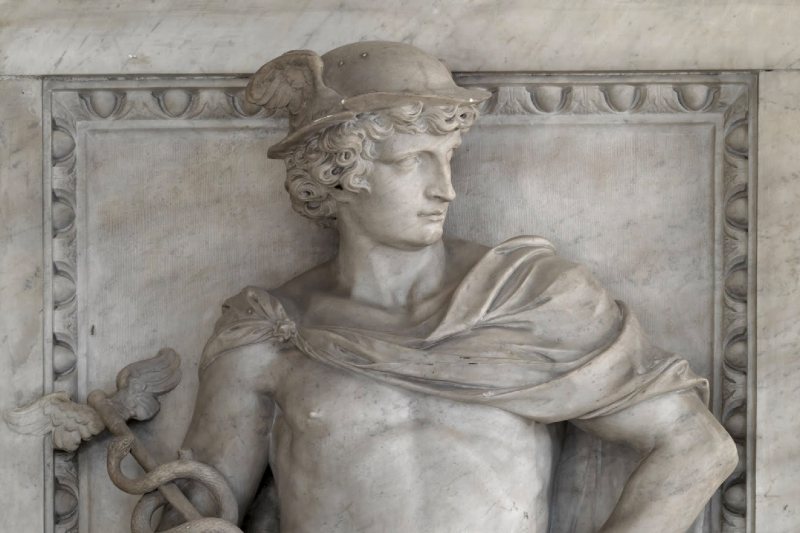
Photo: mythopedia 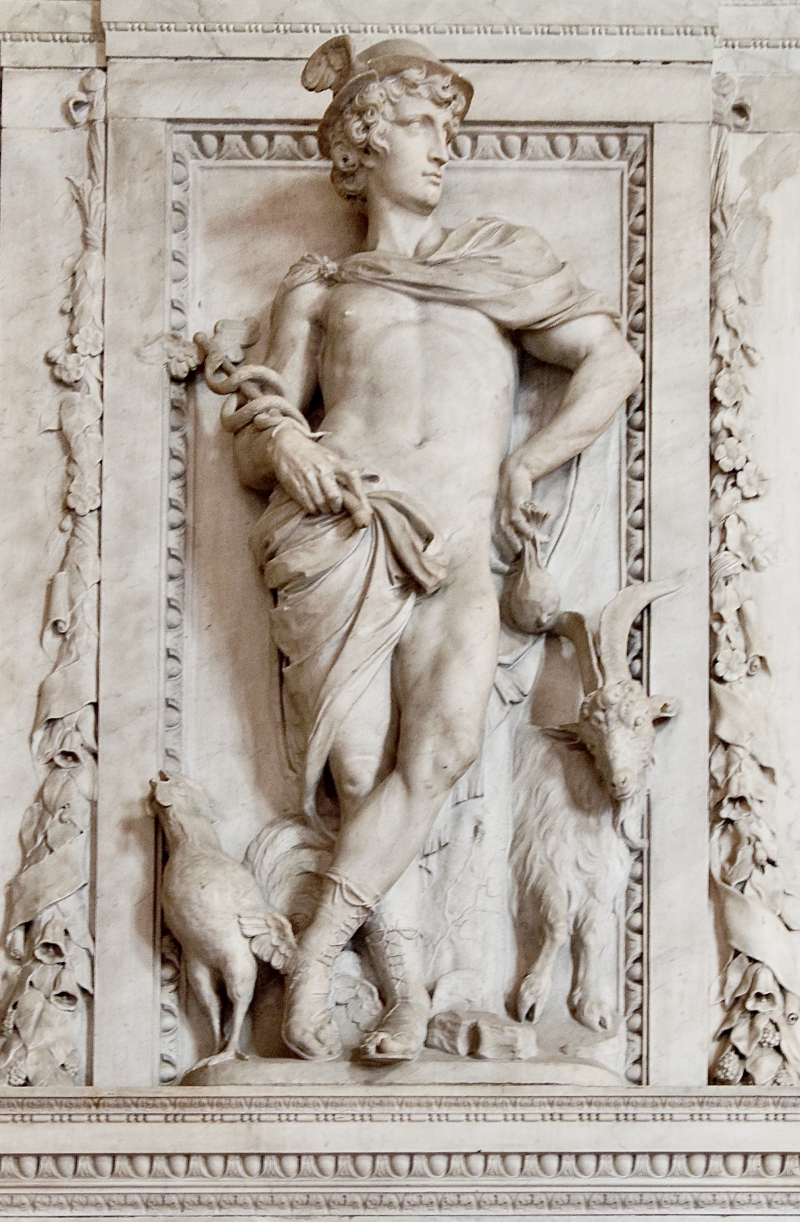
Photo: wikipedia -
Scientists estimate what they believe the temperature would be because we don't have as many tools and thermometers to monitor the temperature on other worlds. Numerous aspects need to be taken into account, such as the planet's atmosphere and distance from the Sun.
You might assume that Mercury is the hottest planet because it is the one that is nearest to the sun. But one of the interesting facts about Mercury is the side of Mercury that faces away from the sun is usually quite chilly since it doesn't have an atmosphere like Earth's that can trap and hold heat. This is especially true because Mercury rotates slowly and takes around 59 Earth days to do so. According to NASA, temperatures on the surface of Mercury may still rise to a scorching 800 degrees Fahrenheit (427 degrees Celsius) during the day and as cold as minus 290 F (minus 179 C) during the night.
Due to its rich atmosphere, Venus, the second planet from the sun, is the planet with the highest surface temperature. According to a recent article by Live Science, the surface of Venus is roughly 860 degrees Fahrenheit (462 degrees Celsius) hot all the time.
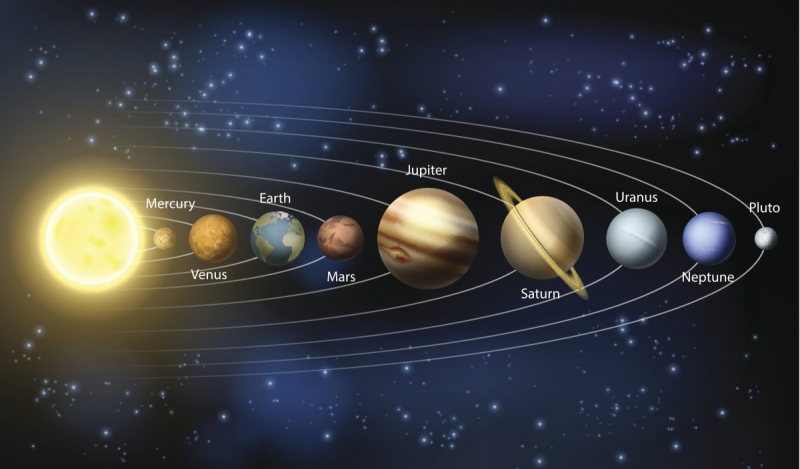
Photo: reddit 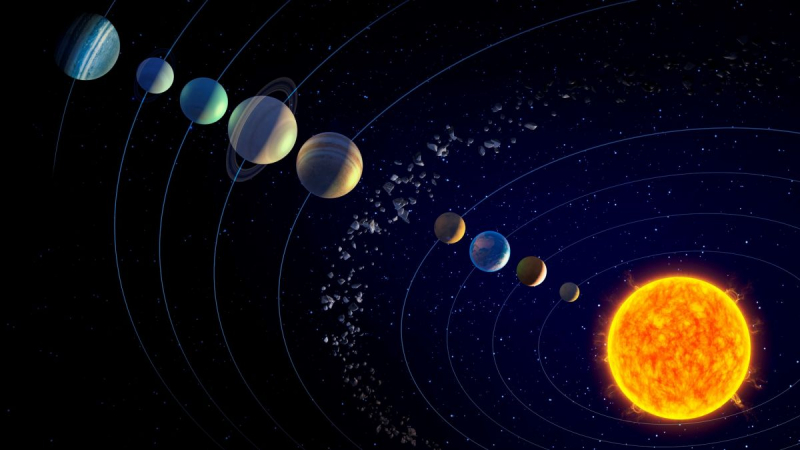
Photo: space -
The Natural History Museum in London, United Kingdom, claims that iron makes up a considerable portion of mercury. Similar to Earth, it is enclosed in a mantle and crust and has an inner core with an outer core made of liquid metal. Despite Mercury being a considerably smaller planet overall, its inner core is comparable in size to Earth's, according to a 2019 study published in the journal Geophysical Research Letters.
Mercury only has an exosphere, which is the name given to the thin outer layer of Earth's atmosphere; it does not have a full atmosphere. NASA claims that the solar wind and meteoroid impacts that eject atoms from Mercury's surface create the exosphere. Mercury has minimal protection from space debris like asteroids thanks to the exosphere, and the planet is so covered with craters that it resembles Earth's moon. According to the Natural History Museum in London, there aren't any moons around Mercury since it is so close to the sun that the sun's gravity is probably pulling them away.
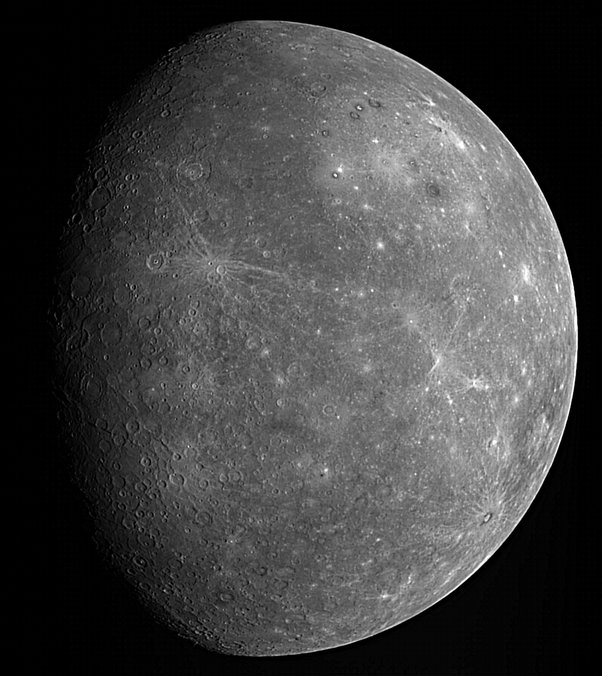
Photo: quora 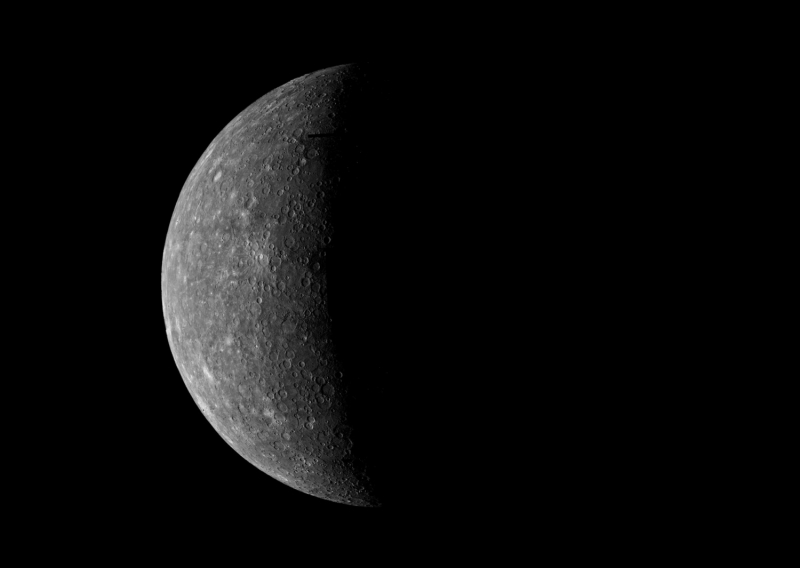
Photo: techtimes -
There is no proof to back up the notion that Mercury supports life, despite the fact that there is still plenty to learn about it. According to NASA, Mercury's extreme heat and cold, as well as its strong solar radiation, are probably too harsh for any type of life to survive.
In 2011, MESSENGER found indications of frozen water on Mercury. The ice is gathered in craters in the poles where it is protected from the sun's rays. Most likely, asteroids transported this ice to Mercury. The Astrophysical Journal Letters reported a study from 2020 that suggested mercury may be making up to 10% of its own ice.
Hydroxyl groups of bound oxygen (O) and hydrogen (H) atoms are found in minerals on the surface of Mercury. These groups can be stimulated by the sun's intense heat and collide to form water molecules (H2O). The sister site of Live Science, Space.com, previously revealed that some of these molecules travel about the planet and end up in icy craters at the poles to produce ice. The sun also decomposes these molecules.
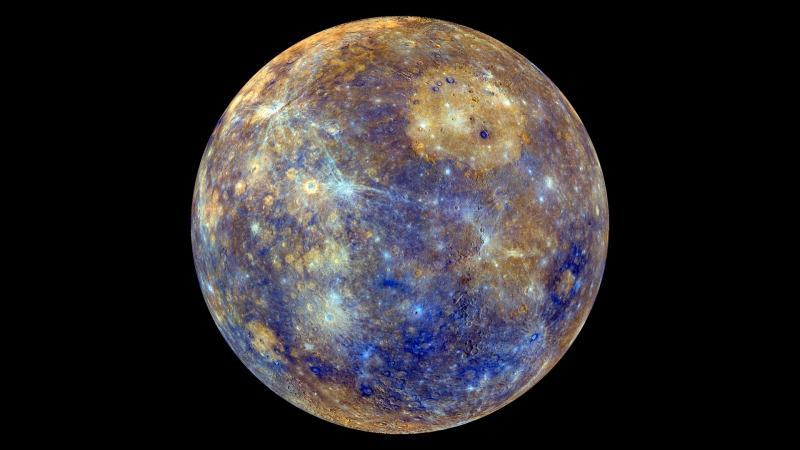
Photo: space 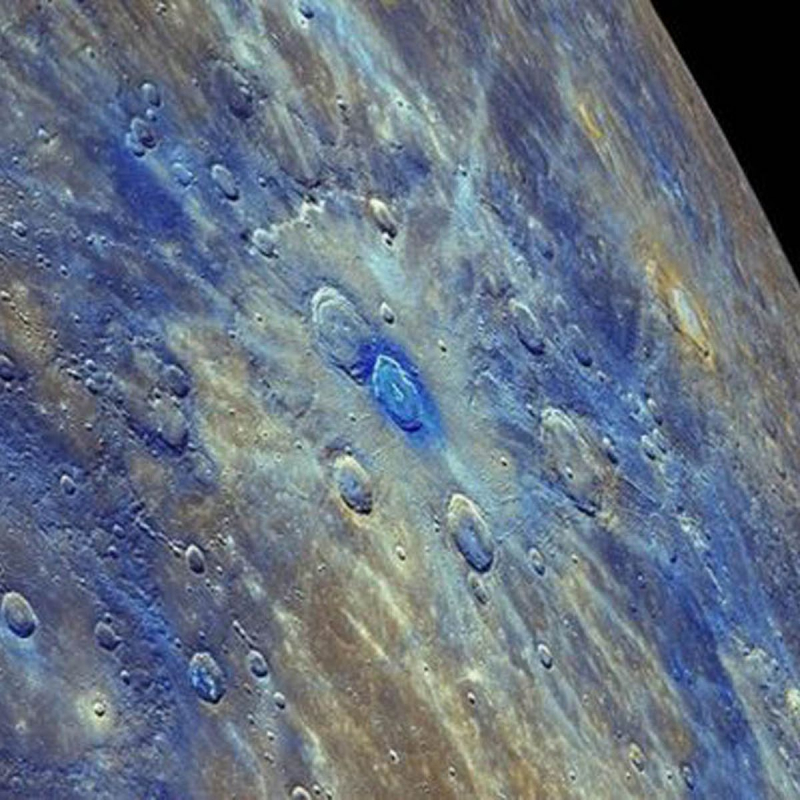
Photo: mirror -
Every planet in our solar system has experienced extensive cratering. This was particularly true in the past, when our solar system was being traversed by a much greater number of asteroids than it is today. Because the majority of the craters on planets like Venus, Earth, and Mars have been eroded away by the wind, rain, volcanic activity, and other processes, we do not see as many of them there. Because there is no discernible solid surface for the meteors to strike, we do not observe any craters on the large gas planets Jupiter, Saturn, Uranus, and Neptune.
Since there is no atmosphere on Mercury, there is no weather to erode the craters, hence the most of them are still visible. And one of the interesting facts about Mercury is it has more craters than others planet. The planet Mercury has craters and features that are named after well-known living authors, singers, and artists who have passed away, such as children's novelist Dr. Seuss and dance pioneer Alvin Ailey.
At the north and south poles of Mercury, deep craters may contain water ice, but only in areas that are always in the shadows. Despite the high temperatures in the planet's sunny regions, it may be cold enough in those shadows to sustain water ice.c
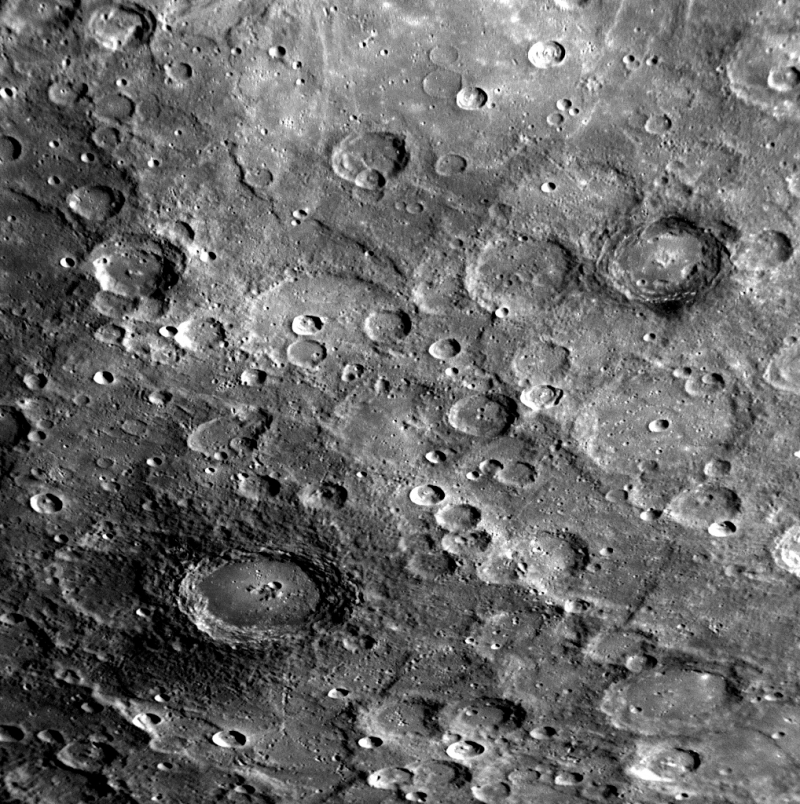
Photo: planetary 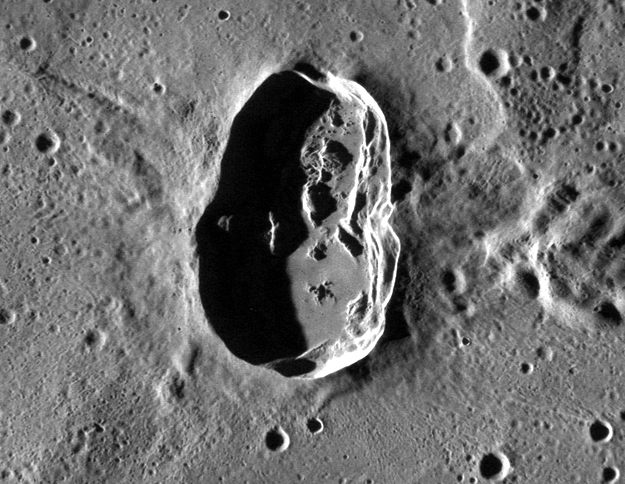
Photo: spaceref -
NASA scientists have recently arrived to the conclusion that Mercury's solid iron core may actually be liquid. A 500–700 km thick silicate-based mantle surrounds the core. The core of smaller planets often cools quickly, but considerable research revealed that the results did not match what would be expected from a solid core. The core is currently thought to contain a lighter element, such sulfur, which would cause the material to melt at a lower temperature. The core of Mercury is thought to account about 42% of its volume, compared to 17% for the Earth.
The planet's surface wrinkled as the iron core of the planet cooled and shrank. These creases are referred to as Lobate Scarps by scientists. These Scarps can stretch for hundreds of kilometres and reach heights of up to a mile.
Many theories have been put up to explain why Mercury's core has more iron than any other major planet in the Solar System. The most popular idea proposes that Mercury once had a mass 2.25 times greater than it does now, a metal-silicate ratio similar to common contrite meteorites, which are assumed to be indicative of the rocky material in the Solar System. Mercury may have been impacted by a planetesimal that was several thousand kilometers large and around 1/6 of Mercury's mass early in the Solar System's existence. The core would have remained as a reasonably significant component after most of the original crust and mantle were taken away by the collision.
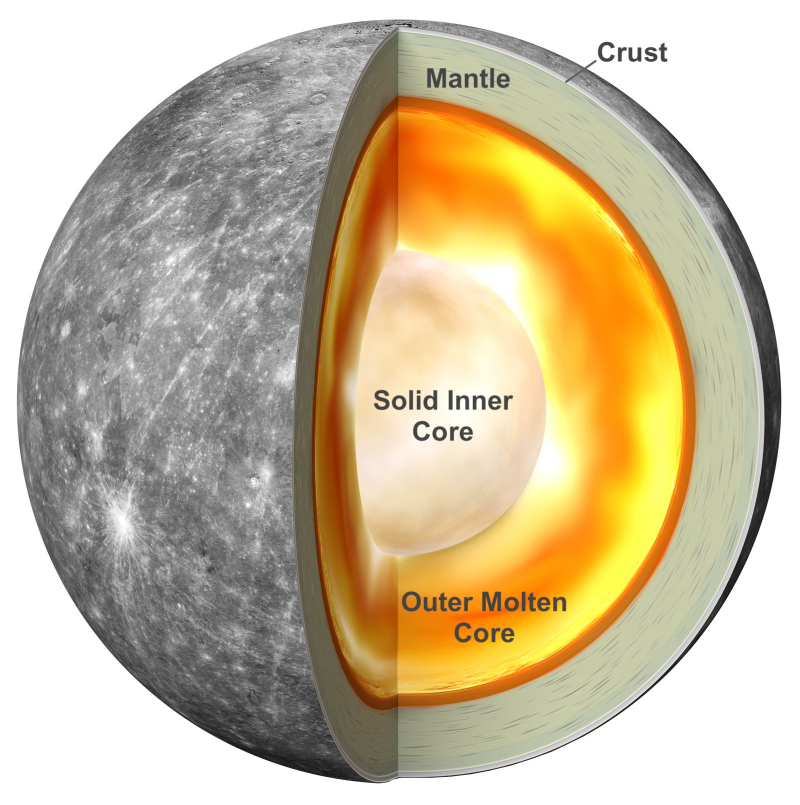
Photo: solarsystem 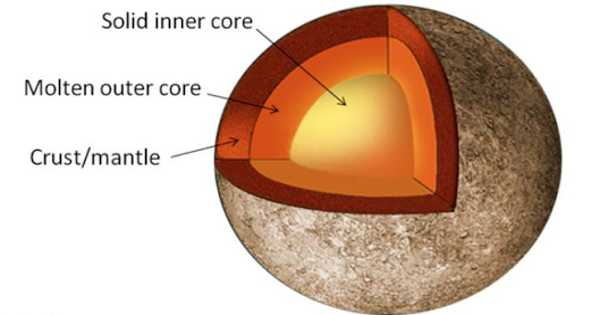
Photo: qsstudy -
Another interesting facts about Mercury is there are two geographically distinct plains regions. Mercury's earliest visible surfaces are gently sloping, hilly plains, which predate the topography that is highly cratered. These inter-crater plains indicate a general lack of smaller craters with diameters less than around 30 km and appear to have destroyed numerous earlier craters.
The lunar maria are similar to smooth plains, which are extensive flat expanses that fill depressions of different sizes. The smooth plains of Mercury have the same albedo as the earlier inter-crater plains, in contrast to lunar maria. Even though these plains lack unmistakably volcanic traits, their location and rounded, lobate shape clearly suggest that they have volcanic origins. As seen by noticeably lower crater density than on the Caloris ejecta blanket, all of Mercury's smooth plains developed much later than the Caloris basin.
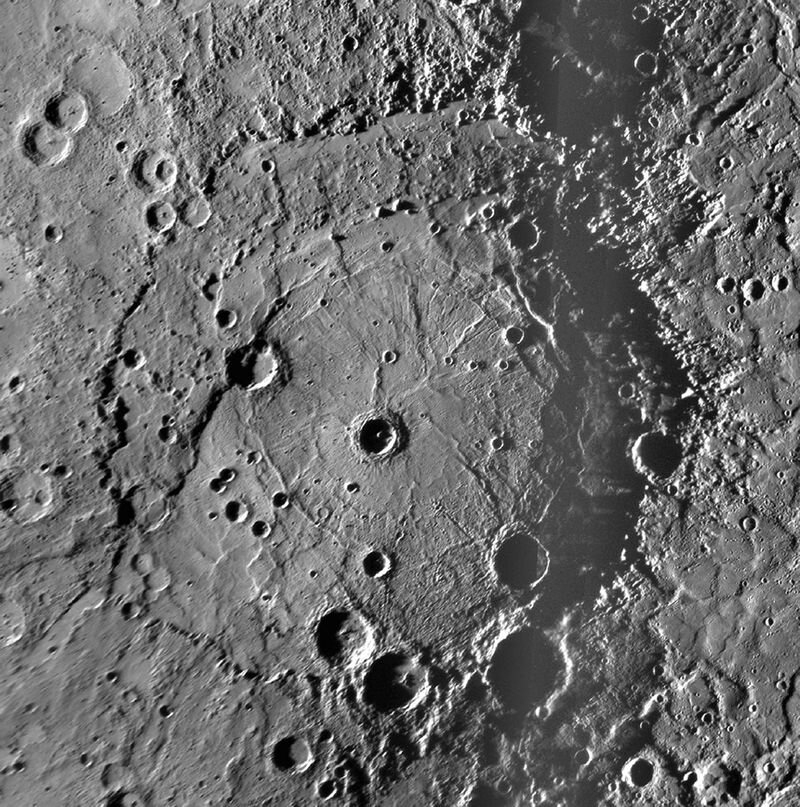
Photo: nwa.space 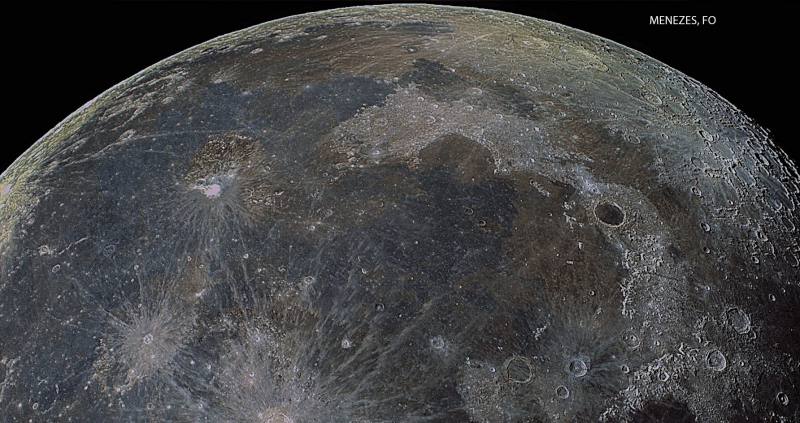
Photo: skyatnightmagazine -
Mercury possesses a strong, and reportedly worldwide, magnetic field despite its modest size and slow 59-day revolution. Mariner 10 data indicate that it has a strength that is roughly 1.1% that of Earth. At Mercury's equator, the magnetic field is around 300 nT strong. Mercury's magnetic field is dipolar, just like Earth's. Mercury's poles, in contrast to Earth's, are almost parallel to the planet's spin axis.
Similar to how the magnetic field on Earth is created, it is possible that this magnetic field is produced by a dynamo effect. The planet's liquid core, which contains a lot of iron, would circulate as a result of this dynamo effect. The planet's high orbital eccentricity would work to retain a portion of the core in the liquid state required for this dynamo effect. These effects would be particularly significant tidal heating impacts.
Mercury has a magnetosphere because its magnetic field is powerful enough to divert solar wind away from the planet. The planet's magnetosphere is powerful enough to capture solar wind plasma while being small enough to fit within Earth. This adds to the planet's surface being weathered by space.
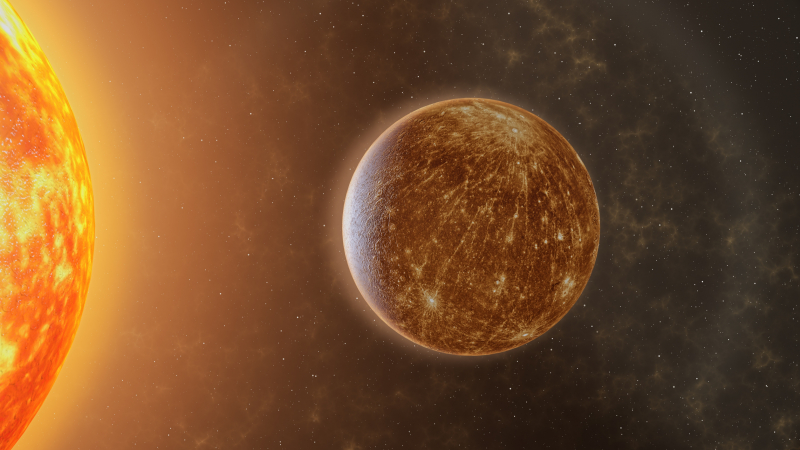
Photo: interestingengineering 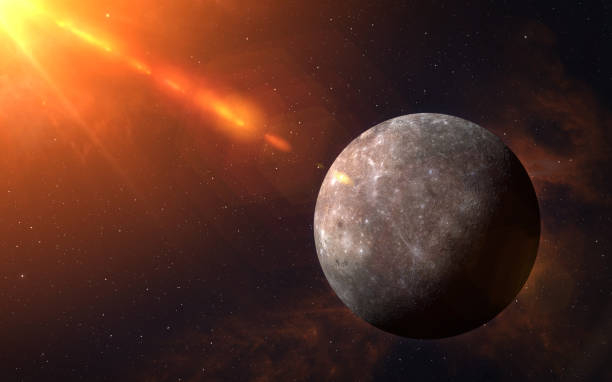
Photo: istockphoto





























